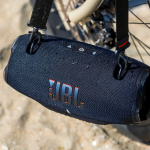US Navy photo by Mass Communication Specialist 1st Class Devin M. Langer
- The US Navy conducted an experiment on Monday, in which it flew an unidentified payload out to the Ohio-class ballistic missile submarine USS Henry M. Jackson.
- The following day, the service experimented with delivering a larger payload to the submarine using a MH-60R Seahawk helicopter.
- Drones and helicopters could be used to deliver medical or emergency supplies, or possibly even messages were traditional communications unavailable.
- Visit Business Insider’s homepage for more stories.
The US Navy recently used a unmanned aerial vehicle to deliver an unknown payload to the Ohio-class ballistic missile submarine USS Henry M. Jackson at sea.
The Navy posted a few photos and a video of the experiment, which was conducted on Monday somewhere near the Hawaiian Islands in the Pacific, but details are few.
A short caption for the imagery provided by the Navy explained only that the experiment “was designed to test and evaluate the tactics, techniques, and procedures of US Strategic Command’s expeditionary logistics,” the aim being to “enhance the overall readiness of our strategic forces.”
The drone in the experiment, a quadcopter carrying a small payload, was piloted by electronics technicians on a separate vessel.
US Navy photo by Mass Communication Specialist 1st Class Michael B. Zingaro
The Navy did not identify the payload delivered to the submarine. It was small, so it is unlikely that it was food or ammunition. As The War Zone, which first reported the recent test, notes, the basic concept seems like a workable solution for the delivery of medical or emergency supplies, or even messages or intelligence.
Last summer, the US Navy conducted an experiment in which an MH-60S Seahawk helicopter dropped a message on the deck of the amphibious assault ship USS Boxer, reviving a World War II-era tactic that involved US Navy pilots flying low and slow over ships and dropping bean bags with messages inside.
“The purpose of the bean-bag drop was to show timely pilot-to-ship communication can be done without electronic transition,” an officer explained in a Navy statement.
Helicopters and drones offer potential communication alternatives in radio silence situations, or in situations where ship-to-ship communications are disrupted due to jamming or other interference.
US Navy photo by Mass Communication Specialist 1st Class Michael B. Zingaro
The day after the drone experiment, the Navy conducted another test, one in which an MH-60R Seahawk helicopter delivered a larger unidentified payload to the Henry M. Jackson, one of the US Navy’s oldest ballistic missile submarines.
This past summer, the Ohio-class sub achieved a milestone, completing its 100th strategic deterrent patrol, an achievement that few other ballistic missile submarines have achieved.
Ballistic missile submarines, known as SSBNs or boomers, are the most survivable nuclear platforms, making them a cornerstone of US strategic nuclear deterrence. It is a role these vessels have maintained since the 1960s.
Powered by WPeMatico






